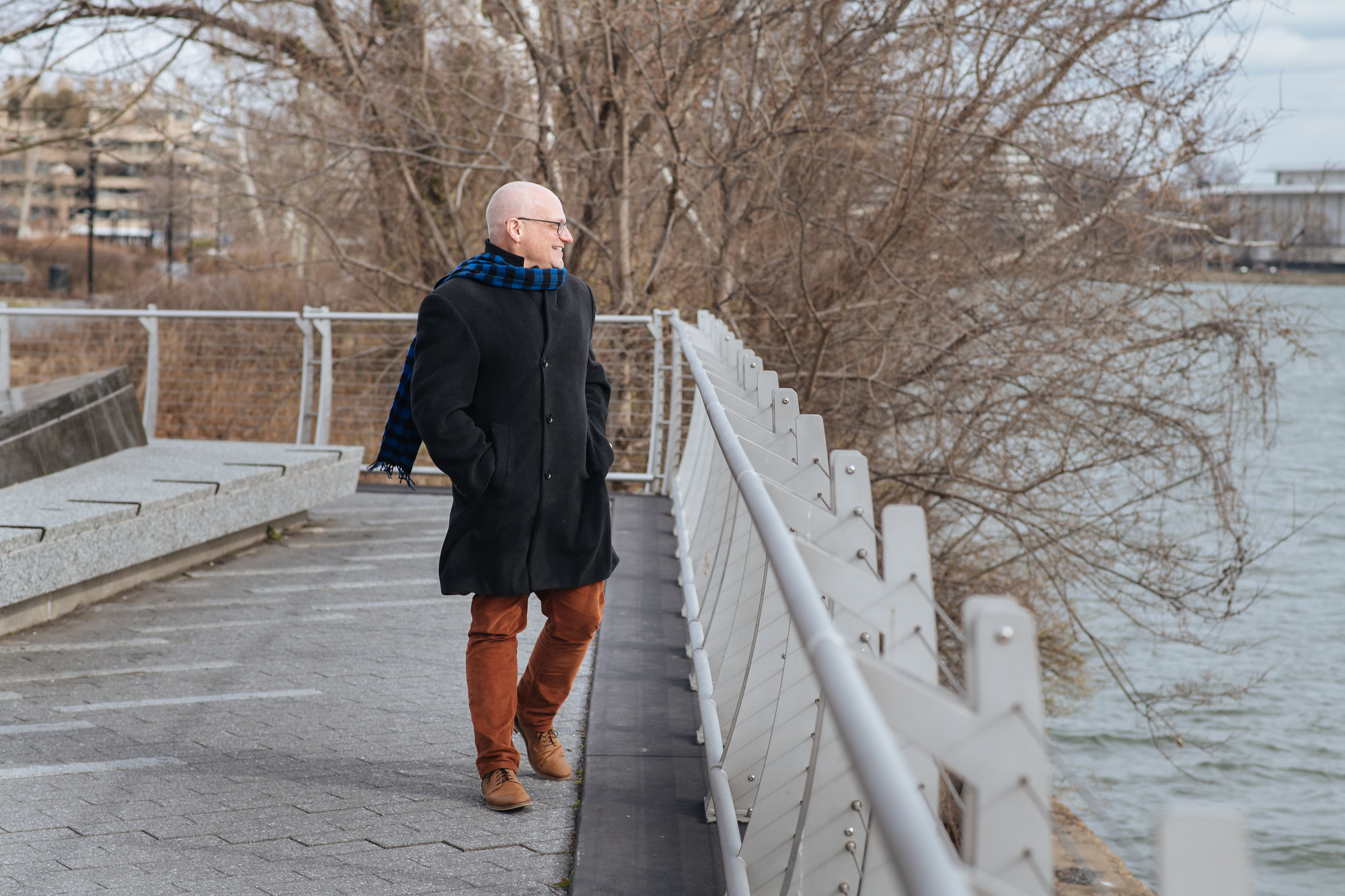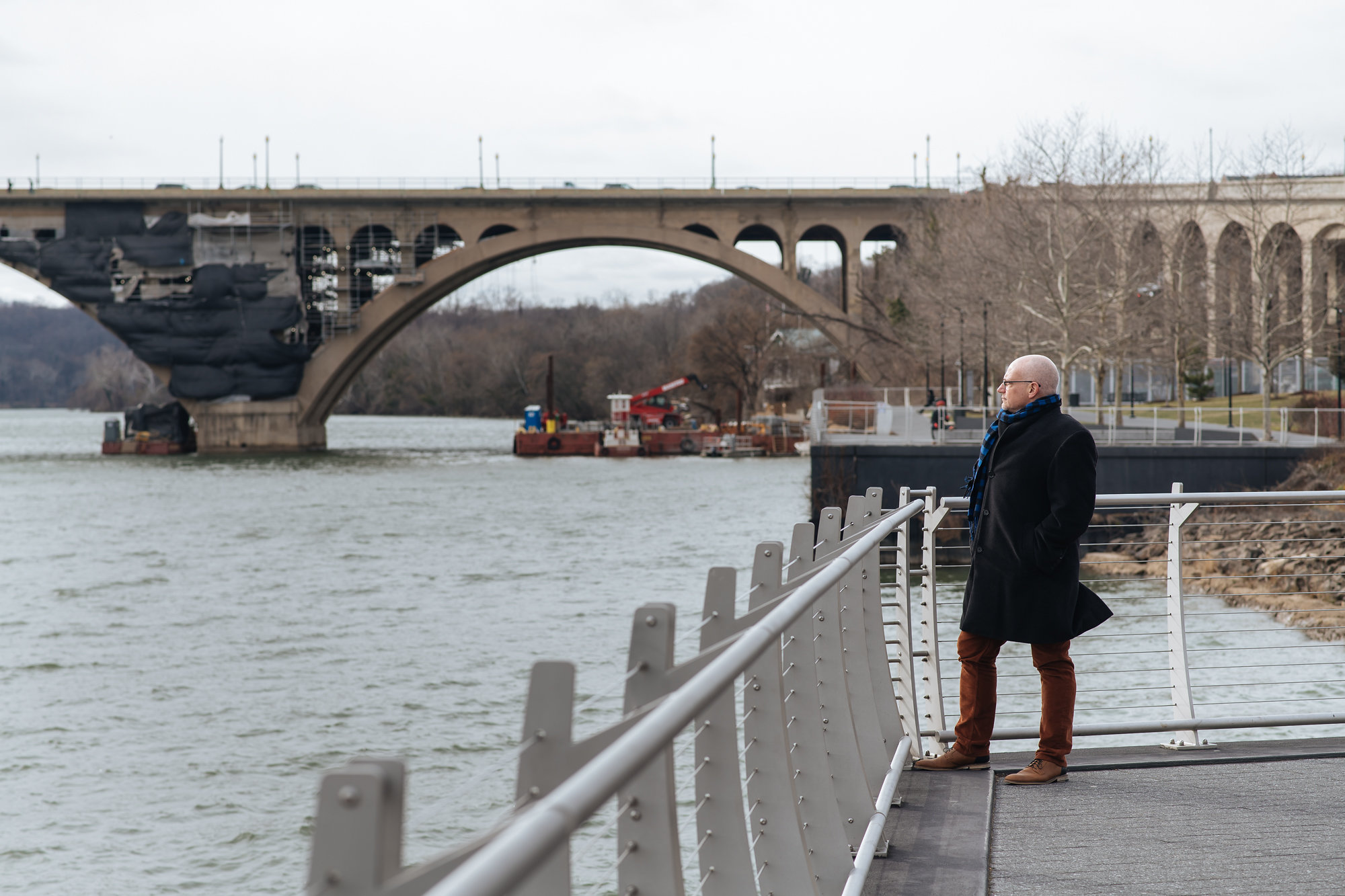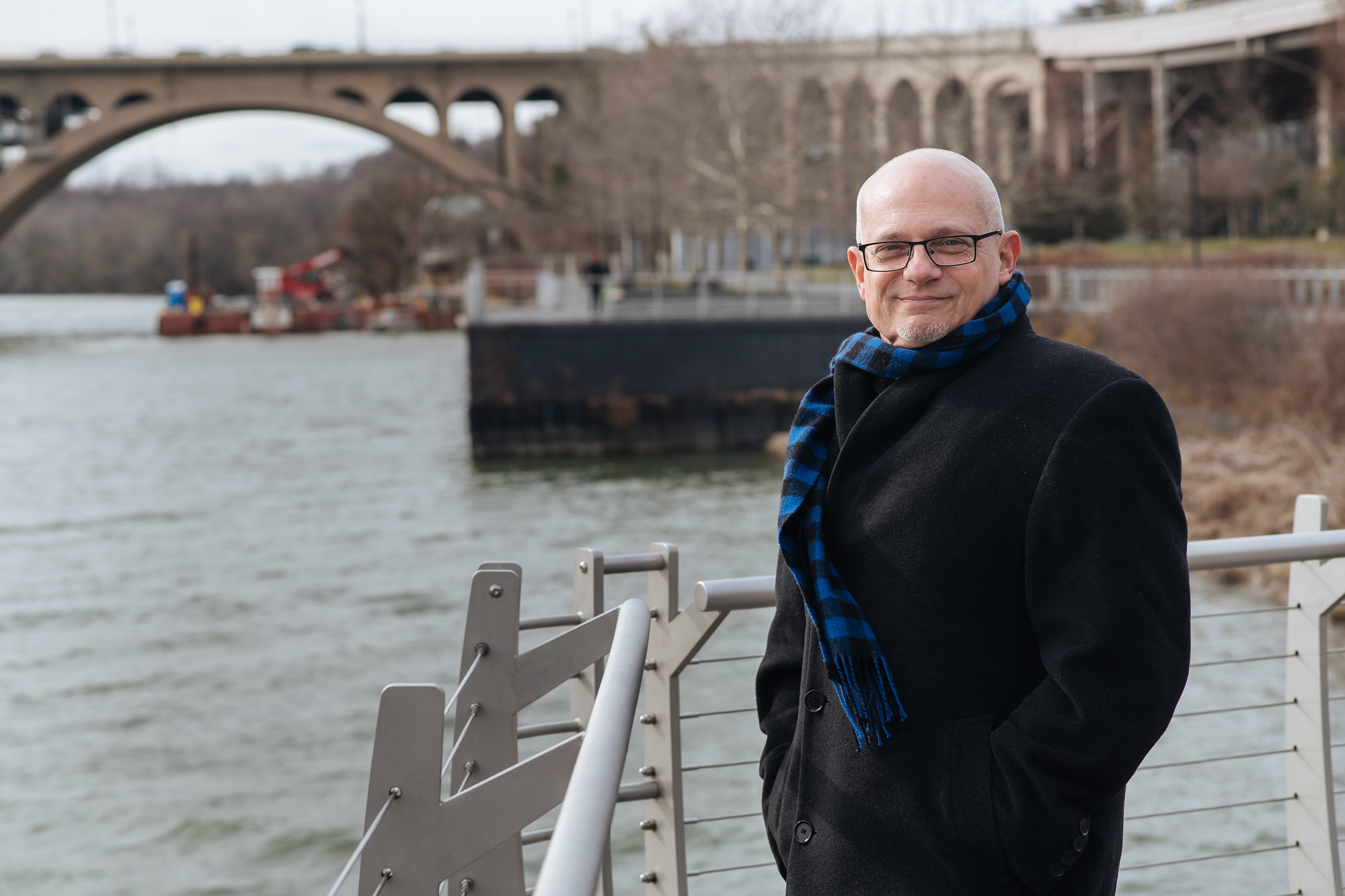‘I Don’t Throw in the Towel Very Well’
It’s a bird! It’s a plane! It’s a…gondola?
David Levy has spent the last year insisting the Georgetown-Rosslyn Gondola is no joke.
‘I think many people are still surprised by it as a transportation system, but I’m meeting more and more people now who get it. They’re diving into the numbers, no longer asking the basic questions.’
David became involved in the project in 2016 when his firm, Livable City Group, joined a team led by ZGF Architects—the design firm that successfully bid to conduct a feasibility study evaluating the proposed transit system connecting Georgetown to the Rosslyn Metro station. His role in the feasibility study was to coordinate with over 20 local, state, and federal agencies—all of whom have jurisdiction over the project—and design an approval path.
The study concluded that an aerial gondola was feasible—with the potential to be built decades before a Georgetown Metro station, providing much of the benefit at a small fraction of the cost, and serving the largest employment center in DC that doesn’t currently have Metro.
Today, David is doing an extension of that work—rounding up stakeholder support, and working with the agencies to determine environmental requirements, as well as a funding path.
‘I probably approached the project with the same level of skepticism as other people, just not having any real experience with gondolas. Now I’m convinced it’s a good idea. It certainly would be a boon for Georgetown and Rosslyn, but it’s more than that. It’s a missing piece of the regional system.’
In his years at the National Capital Planning Commission (NCPC), David’s job was to ‘mold projects into a relatively conservative context.’ Something like the gondola, he says, might have alarmed him had it come across his desk.
And yet, he’s sold.
‘It’s practical and innovative at the same time. And it’s important that we’re creative and forward-thinking in our transportation planning. The gondola is an efficient way to move a projected 6,500 people per day with very little wait time, and a bargain to build compared to a Metro station.’
This project taps into David’s two ‘great loves’—transportation and public space. He got the land use and transportation planning bug when he moved to Alexandria in the 80s, part of a Virginia Tech architecture program at its satellite campus. As David began driving around Northern Virginia, he was both alarmed and intrigued by the uncontrolled sprawl—suburbia eating up the countryside.
‘My love of cities, and the chaotic sprawl surrounding them, inspired me to try to make more organized places.’
During his time at NCPC, everything from the Eisenhower Memorial and The National Museum of African American History and Culture, to projects on the Mall that have yet to be built, came across David’s desk. It was a lesson in patience and thick skin that has prepared him for complex projects like the gondola in a town with a range of perspectives and approval agencies, where a project can take 10 years to be built.
‘My job has always been about balancing opinions and perspectives. You work hard to gather as many as you can. Not everyone gets everything they want, but you create consensus around what becomes a shared outcome. That’s when you know you’re at the end of a project—when you’ve found the right balance point, everyone gets something, and it’s a pretty good project overall. But I don’t throw in the towel very well.’
David hasn’t given up on the gondola, but he says it requires leadership at both the regional and municipal level.
‘We need a political champion who recognizes the opportunity in this. Someone who sees that mobility will continue to become more difficult as more people move here, and knows it’s a good idea to commit funds at this point. We have to do something, so let’s do something innovative.’
David says the state of Georgetown’s transportation is problematic, and the gondola is an opportunity to address it.
‘When I leave my home, I typically walk out the door and then decide how I’m going to get where I’m going,’ says David, who lives in Columbia Heights and hasn’t owned a car in over 15 years. ‘I think that’s what characterizes a successful city from a transportation perspective—a lot of choice. DC has that, but unfortunately for Georgetown, there are fewer choices because there’s no Metro station and so much traffic congestion. It takes nearly an hour to reach Georgetown by transit from Columbia Heights.’
There are over 40 successful urban gondola systems throughout the world—from Mexico City to Portland, Oregon. David sees broad applicability for the technology not only in Georgetown, but in Northern Virginia, and east of the Anacostia River as well.
‘The gondola has a relatively small footprint on the ground compared to other transit systems, so I think that makes it very flexible in terms of where it can be built. It’s clearly not a tourist ride.’
If the Georgetown-Rosslyn Gondola can secure the backing of city leaders, the next step is launching a three-year environmental study. Theoretically, if that began this year, the system could be running by 2024. According to the most ambitious WMATA estimate, the metro tunnel won’t be built until after 2040. David says the gondola could either be replaced by a new Georgetown Metro station or coexist with it. Regardless, the gondola would be Georgetown’s ‘Metro station’ for the next 20 years.
Still, David isn’t hanging his hat on this one project. His firm gravitates toward ‘surgical, tactical work’ in public space—offering planning advice to municipalities, universities, and BIDs, while also conducting small planning studies. His community engagement partnership–Ēlumināt–conducts surveys, workshops, and public meetings. It’s nimble work that offsets David’s more long-term projects.
‘We want to get in there and tweak public space and transportation. You can do things relatively quickly and relatively cheaply, using the city as a laboratory to improve space for people.’
Both firms also integrate equity into their work, with a focus on DC’s large Deaf community. Four years ago, after a business event where he was unable to chat with a Gallaudet administrator, David enrolled in a sign language class the next day. Today, he hires Deaf people for every project—young graduate students studying city planning or policy, who might otherwise have a difficult time getting to the table because of language and cultural barriers.
‘There are a lot of smart, young Deaf people in this town, and they bring a unique and valuable perspective when it comes to planning and public space. One of those smart people is my friend, Josh, who shared his perspective that planners create disability by designing cities that don’t accommodate the full range of human abilities. I was used to integrating ADA requirements into my work, but Josh’s comment led me to re-examine some of what I took for granted. And I learned that if we pay more attention to the needs of Deaf people in public space, we build better public space for everyone.’
Space that could one day be 150 feet above the Potomac.





